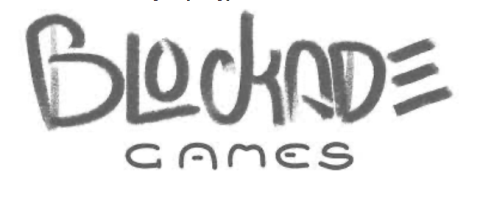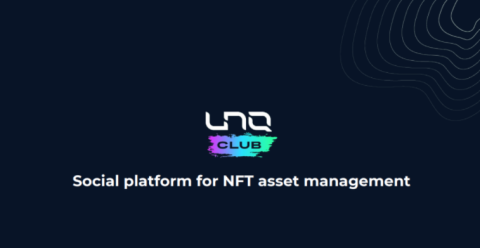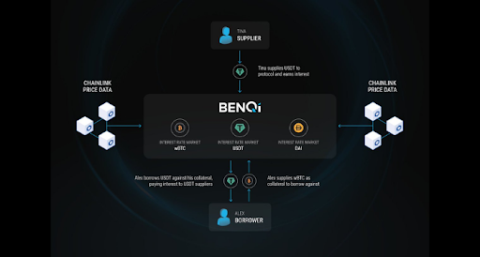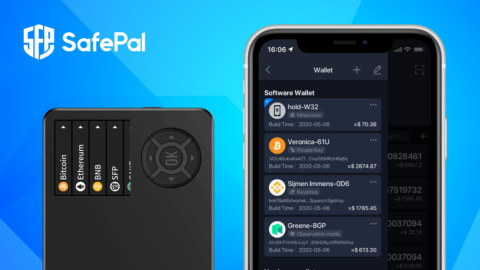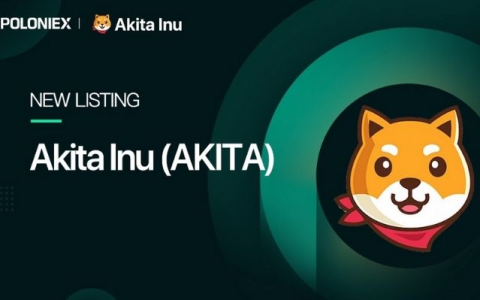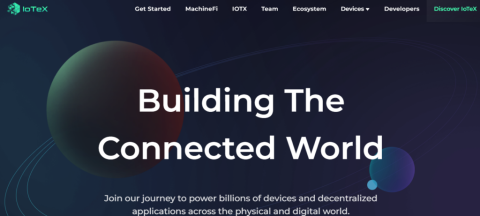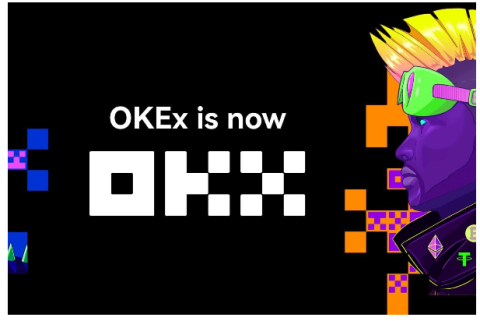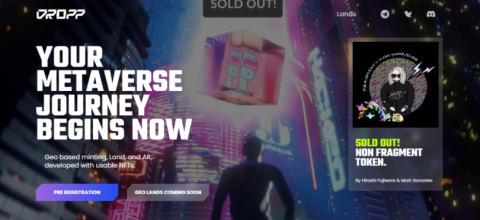What is thena? Discover the outstanding features of Thena and THE . token

Ngoài PancakeSwap, hệ sinh thái BNB Chain còn có một AMM khác có TVL đạt 150 triệu USD chỉ sau hai tháng ra mắt, dự án này được gọi là Thena.
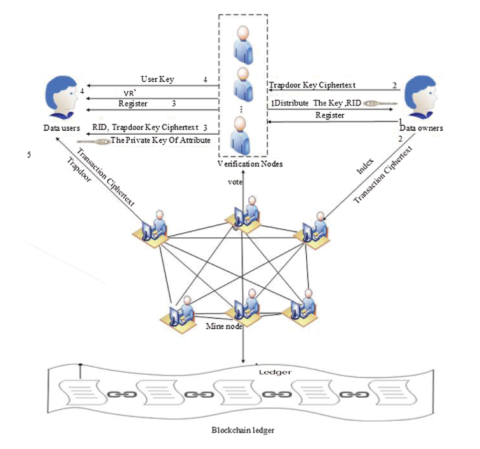
The Graph is a decentralized protocol that allows indexing and querying of data from the blockchain, and Ethereum is the pioneer. The special feature of The Graph is that it allows querying the data that is difficult to query directly.
Current problem
Currently, some projects with complex smart contracts like Uniswap and NFT projects like Bored Ape Yacht Club store data on the Ethereum blockchain, making it very difficult to read information other than basic data. .
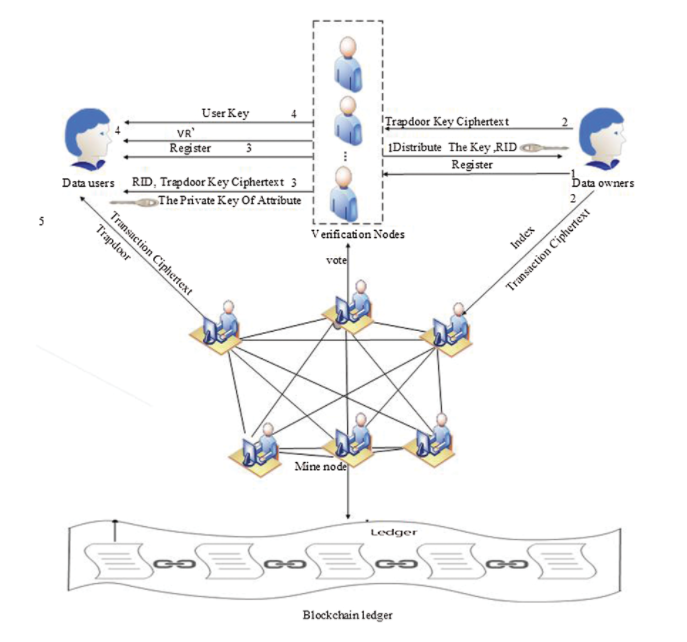
In the case of Bored Ape Yacht Club, the user can perform basic reading operations on the contract such as getting the information of the owner of a certain Ape, getting the content of the Ape's URI based on it. Their ID or total supply. Because these read operations are programmed directly into the smart contract .
However, they cannot query and perform more advanced operations such as aggregation, searching, checking relationships, and creating filters.
That is, if the user wants to query those Ape owned by a certain address. Or filter by one of its characteristics, they won't be able to get that information by directly interacting with the smart contract itself.
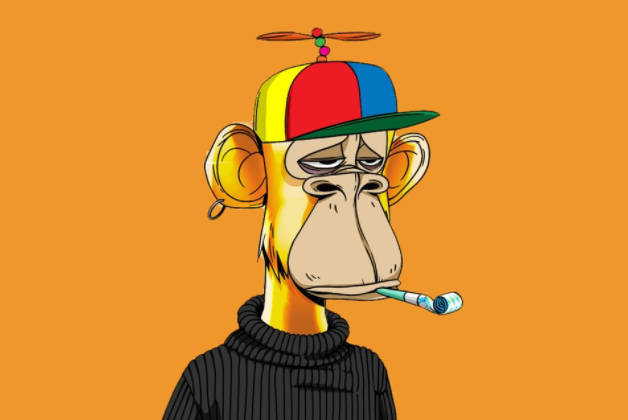
Summarizing data chains on blockchain is really difficult
Blockchain properties such as final characterization of a block, chain reorganization, or block traceability complicate the process of data chain aggregation. This means that these blocks will prolong the aggregation process as well as make it difficult to export accurate data query results from the blockchain.
The Graph aims to extract, statistics, filter and organize data from different protocols. This gives users easy access to data sources and allows them to use such information and data directly. Developers can retrieve data such as token prices and use in their applications.
During normal data extraction, there is still the risk of the data being intentionally manipulated. This results in data entering the blockchain that will not correspond to other actual sources of information.
Example : A trading platform provider may quote a higher price on the Website and benefit from the difference.
Smart contracts also depend on independent data sources. Automated market makers (AMMs) are protocols that automatically process cryptocurrency transactions. However, those tools require verifiable data, such as price and market capitalization, to trigger smart contracts under certain conditions.
Solution of The Graph project
The Graph solves this problem by creating a decentralized indexing protocol and enabling efficient querying of data on the blockchain through subgraphs.
Each Subgraph is an open API so that developers can use the GraphQL programming language to query the data that the Subgraph tracks on the blockchain. Today, on the Ethereum network there is a decentralized service with similar capabilities and supported by the open source implementation of Graph Node.
Mode of Operation
The Graph works by learning what information and how to index data on Ethereum. This will be based on the Subgraph description, also known as the Subgraph manifest.
In the statement of a Subgraph, The Graph will perform the task of identifying smart contracts, what is interesting in that contract, and how to map the data to the information stored in the facility. system data.
Specifically, after a developer has finished writing a description of Subgraph, they will use the Graph CLI to store that information into a document storage system (IPFS) and The Graph's algorithm will start indexing it. data item for that subgraph.
Terminology Explanation:
The diagram below will provide more details on the data flow once a Subgraph manifest has been deployed and processed transactions on Ethereum.
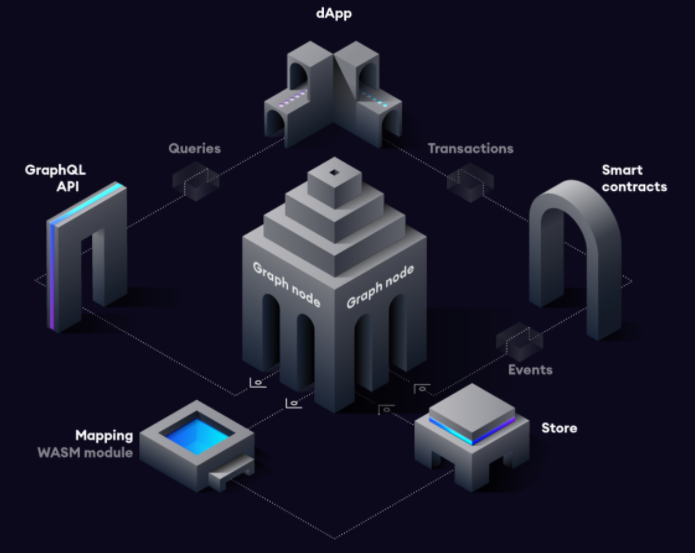
The process goes like this:
Explanation of words : GraphQL is a query language that specifies and the way in which a client requests information through an application programming interface (API).
The Graph is a protocol used to restructure blockchain data and make it more accessible. The platform is currently providing data for many applications that are of great interest in the DeFi and Web 3.0 ecosystem.
Anyone can build and publish Subgraphs – open APIs by which applications can query data using GraphQL. Subgraph makes it easy for developers to build new projects on the blockchain. What Google has done with the search engine, The Graph will do the same for blockchain.
Currently, The Graph's hosting is processing over 4 billion monthly queries for apps like Uniswap, CoinGecko, and Synthetix. Includes extracting data such as token price, past trading volume and liquidity situation.
However, The Graph's mission is not to permanently run a hosted service model, but the project is aiming to eliminate the ability to integrate APIs, servers and databases that currently focus on one point. . This makes them easy targets for hackers.
That's also why the founding team is growing The Graph network. The aim is to create an open market for Indexers and Curators to work together. Thereby, the statistical and data arrangement will become easier and more efficient. After that, all data will be provided by The Graph to DeFi and Web 3.0 projects to be used by the very nature of decentralized finance.
In addition, The Graph network will allow applications to operate without a server. This keeps them up and running as they are no longer dependent on a single server or database. Instead it is a network of Nodes that are paid to keep the service running.
At the same time, The Graph also allows any user actively contributing to the network to participate in the mechanism of earning income from the provision of data services. Instead of giving that right to the data monopoly units like today.
In addition, The Graph is transforming the current data economy into one with better incentives, more secure data sources, tightly managed APIs, and more efficient queries in terms of information. believe. And The Graph Network's Mainnet was launched on December 17, 2020.
Optimal solution
As mentioned, The Graph is a protocol that allows users to query data from blockchains like Ethereum and data storage systems (IPFS).
The protocol will receive query commands from users and perform data collection, analysis, and aggregation operations without any interaction with third parties. The project development team claims that they will make querying data faster, more reliable and more secure.
Joining is easy
Besides, The Graph network allows anyone to build and publish Subgraphs. At the same time, this network also acts as an intermediary that allows any two applications to communicate and interact with each other.
Professional team
The members of The Graph development team include seasoned experts from large organizations and companies such as the Ethereum Foundation, Puppet, Redhat and Barclays PLC.
Smart supply stimulation mechanism
The project's token is GRT, which plays an important role in all stages of The Graph's operating process and economic mechanism. This economic system consists of groups of members in charge of different roles such as Indexer, Curator and Delegator.
The Graph team is also working on support for Layer-1 blockchains such as Bitcoin, Polkadot and the NEAR protocol , making all information traceable.
Currently, the main way to make money from The Graph project is to contribute directly to the system to receive rewards.
Development team
Members of the founding team of The Graph include Yaniv Tai - project leader, Brandon Ramirez - head of research and Jannis Pohlmann - head of engineering. The project also features experts from companies and organizations such as the Ethereum Foundation, Puppet, Redhat, and Barclays PLC.
Yaniv Tai: Currently, he holds the position of head of development for The Graph project, before that he worked as a partner and software engineer at Functional Foundry. In 2016, Yaniv Tai founded Workflo – a company that helps developer teams build UIs faster.

Brandon Ramirez: You serve as Co-Founder and head of research at The Graph. Besides, he is also Co-Founder, Head of Product Research at Edge & Node. He also worked as a software engineer at Functional Foundry.

Jannis Pohlmann: You are currently the chief technical officer of The Graph. He is also a Co-Founder and has held the position of technical head at Edge & Node since early 2021.

In addition, The Graph also owns a team of experienced advisors in the field of cryptocurrency and blockchain.
Investors
The Graph is a project that received great attention from the community through 5 rounds of funding with a total amount of 19.6 million USD raised from investors such as:
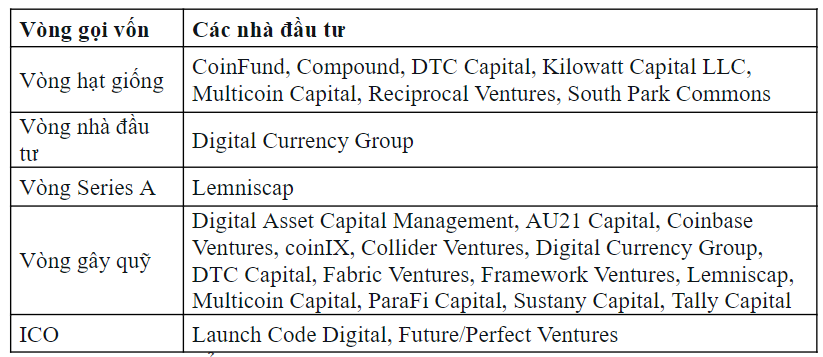
Mainnet development progress of The Graph will take place in 3 phases as follows:
Stage 1: Getting started
As we all know, in The Graph network, the Indexer will play an important role in synchronizing new Subgraphs and giving appropriate parameters to that Subgraph.
The Graph Foundation will support Subgraph's transition to a decentralized network. Starting April 2021, The Graph will test the first Subgraph on its official Mainnet.
Phase 2: Release of DApp
After the Subgraphs are fully synchronized on the Mainnet, they will work on the DApps of The Graph network partners, after which the Indexer and Delegator will receive the query fee.
In other words, they will receive a reward that is considered a contribution fee built on this decentralized platform.
Stage 3: Direct administration
As partner projects begin working on the stable network, The Graph Foundation will be publicly available to the developer community.
This will make it easy for developers to upload Subgraphs to the system and receive query fees. More specifically, DApp developers can tweak the configuration of the Subgraphs however they wish.
Gateway is a suite of products that is expected to launch 30 to 60 days after the start of Phase 1.
The Graph development team is working non-stop to bring a completely decentralized and highly reliable infrastructure. To ensure the economic security of The Graph network and the truthfulness of the data queried, community participants will use The Graph's token GRT.
GRT is the official token of The Graph using the DPoS (Delegated Proof-of-Stake) consensus protocol. To hold important roles on the network such as Indexer, Curator and Delegator, GRT tokens must be staked. This is to sign up to provide indexing and management services to The Graph network and to receive a fair reward for their contribution.
In addition, staked GRT is also used as an insurance cost for operations on the system. Because when an Indexer shows signs of abnormality in data supply and statistics, the system will deduct very heavily from the amount of tokens that person has staked on the system.
GRT is an ERC-20 standard token on the Ethereum blockchain, used to allocate resources in the system's network. Active Indexers, Curators, and Delegators can earn income proportional to the amount of work they do and the amount of GRT they have staked.
The total GRT supply at Mainnet launch will be 10 billion tokens and new token issuance as indexing rewards will start at 3% yearly. This will be subject to independent technical administration in the future.
In addition, the amount of tokens burned is expected to be about 1% of the query fee and all deposit taxes will be burned as well at the discretion of the technical administration.
Indexer – Indexer
Indexer is the person who operates the Nodes in The Graph network and requires them to have a high technical level. They stake GRT tokens to register to provide indexing and query processing services for information and data. Indexers will receive GRT – this is considered a query fee and indexing reward for their service.
Curator – Person in charge
Curators are the ones who help develop Subgraph and they must have a moderate technical level. When data users or community members signal to Indexer which API should be indexed in The Graph network.
At this point, the Curator will send the GRT into a bonding curve to signal a specific subgraph that needs to be developed. Thereby, Curator will earn a portion of the query fees based on the Subgraphs they have reported and place an incentive for the highest quality data sources.
Curator will be responsible for managing Subgraphs and loading GRT into the system through the Graph Explorer decentralized application.
This process is done on a federated curve, so the sooner Curator signals, the greater the percentage of query fees they earn on that Subgraph, relative to the amount of GRT they have deposited.
Delegator – Authorizer
Delegators are individuals who want to contribute to the security of the network but do not want to run any of The Graph's Nodes themselves. Delegators will contribute by delegating GRT to Indexers, so they don't need technical expertise.
Delegators are allowed to select Indexers based on their performance across parameters such as query fees, past penalties and uptime. As well as parameters for the fiduciary such as the share of costs and rewards from Indexer.
Delegator will either delegate or de-authorize GRT to Indexer through the Graph Explorer decentralized application. And they earn a portion of query fees and indexing rewards in GRT tokens.
Consumer – User/customer
Consumer is the end user of The Graph platform when querying Subgraphs and paying for Indexer, Curator and Delegator.
Users can be developers or the projects themselves that need to use and pay for querying the data, as they would work on AWS or other cloud storage services.
However, some applications will pass the query fee on to the user or aggregate it into the cost of the product. Users will pay query fees through gateways or wallets built on the open source smart contracts of The Graph network.
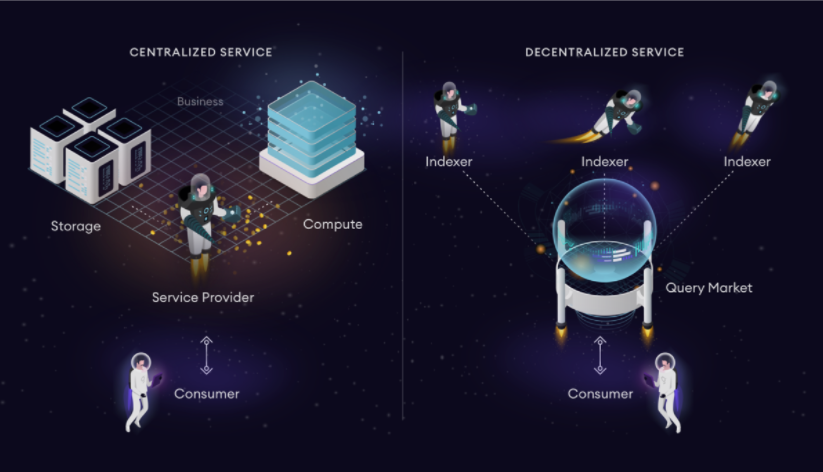
GRT staked in the system will be locked for a certain period of time to become Indexer. This number of tokens can be reduced if Indexer harms or provides incorrect data to applications or simply indexes incorrectly.
For Curator and Delegator there will be a deposit tax to limit inefficient decision making that can harm the sustainability of the system.
In addition, Curator also receives lower query fees if they choose to manage on a subgraph of poor quality.
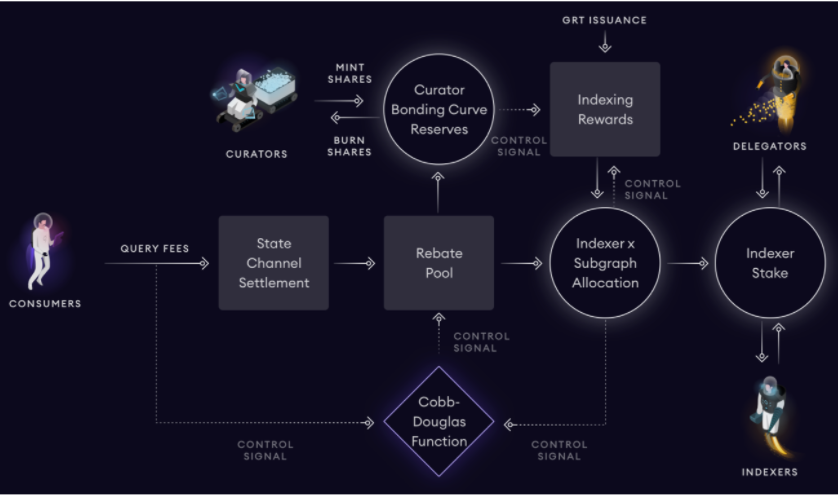
Indexers with a stake in GRT operate in a query marketplace, where they earn GRT from indexing and providing information for queries from Subgraphs. For example, provide Uniswap market data on Uniswap.info.
The prices of these queries will be set by the Indexer and vary based on the cost to index the Subgraph, the demand for the query, the number of management signals, and the market rate for blockchain queries. Applications are paying for queries so information aggregation costs are expected to be much lower than server and database launch costs.
In addition, the Payment Gateway will allow users to connect to the network and perform payment operations. Initially, The Graph founding team will run a series of Gateways that will allow applications to pay query fees on behalf of users. These gateways create a direct connection to The Graph network. Any development team can create and operate their own Gateways.
Gateway will also be responsible for processing the payment transaction for the query fee and transferring it to the Indexer after agreeing on the price, accuracy, and security information of those queries.
Currently, GRT tokens are traded on DEX exchanges such as Uniswap , SushiSwap and CEX such as Binance, Gate.io, Huobi , Coinbase...
Up to now, GRT has been able to attract a lot of attention and is in the top 50 cryptocurrencies with the highest total market capitalization in the Crypto market, namely ranking 49. The Graph has had some very famous clients in the market like CoinGecko, Aave, Decentraland, Synthetix and many more.
On the investor side, The Graph has also created a big buzz with the presence of large investment funds such as Multicoin Capital , Framework, Coinbase Ventures and Digital Currency Group.
The Graph has been live online since December 2020 and the development team can already be proud of the community's level of interest and acceptance. Contrary to many other cryptocurrencies, some of which are priced quite high before the product launch, The Graph has started with a cryptocurrency ecosystem.
On the other hand, reliable data plays an important role in the cryptocurrency and blockchain sector. Those who provide or publish data should always strive to ensure the accuracy of such information. The Graph solves this information, data problem with on-chain data. Similar to how Chainlink solves the Oracle problem for off-chain data aggregation.
Although The Graph is still a very new project, many platforms have already started ingesting data through Subgraph. If this growth is sustained, The Graph could grow into one of the pillars of the blockchain sector in the coming years.
Some official information channels of the project that investors can follow are:
Website | Twitter | Telegram | LinkedIn | Reddit
The above article shared details about The Graph and the GRT token. To date, over 8,000 Subgraphs have been deployed by over 10,000 developers for apps like Uniswap, Synthetix, Aragon, Gnosis, Aave, Decentraland, and more.
When we talk about DeFi trends, it's impossible not to mention Web 3.0. This will also be a very interesting keyword in the future. Thereby, The Graph is a project that provides the output of blockchain data for transmission to Web 3.0 applications.
The Graph has spent a lot of effort building infrastructure from traditional to decentralized. In the future, The Graph can also create a new perspective, which allows everyone to contribute to build a big and trusted feed, information.
Ngoài PancakeSwap, hệ sinh thái BNB Chain còn có một AMM khác có TVL đạt 150 triệu USD chỉ sau hai tháng ra mắt, dự án này được gọi là Thena.
Blockade Games provides a platform that allows developers to create blockchain games. In addition, Blockade Games also creates many interesting free games.
UNQ Club is a project that provides a blockchain platform that allows investors to collect and manage existing NFT assets.
BENQI is one of the important pieces of the Avalanche ecosystem. Join TraderH4 to find out what BENQI (QI) is as well as detailed information about the QI token.
In addition to a cryptocurrency storage wallet, SafePal is also known to many investors for its SFP tokens and airdrop events with attractive rewards.
The fever from Akita Inu in the Crypto market in the past time has created a great buzz along with the rapid development of the "dog house token".
What is IoTeX? This is a blockchain built and developed in conjunction with the Internet of Things (IoT). Join TraderH4 to learn this article.
What is OKB? OKB is an exchange coin of OKX and the OKX Chain blockchain. Let's learn about OKX and OKB exchanges with TraderH4 in this article.
DROPP GG brings an innovative and novel idea to provide an NFT mint platform based on geographies outside of the real world.
CronaSwap is a DEX built on Cronos Chain, which has a similar model to Uniswap.
